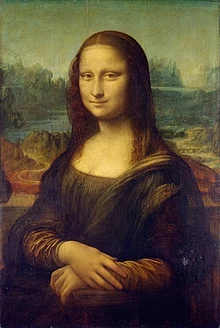Visual Arts

Pictorial art or pictorial arts (from "from" and Art.-Slav. "image"; praslav. ob- + razъ — cut, draw a line; To decorate) is a class of spatial arts that combines painting, sculpture, graphics, monumental art and photographic art. The criterion for their unification at the semiotic level of classification "is the volume, three-dimensionality or flatness, two-dimensionality of the images created with their help. It is this feature that determines the distinction that has developed in the distant past between the two main types of fine art - painting and sculpture." Unlike non-pictorial types of plastic arts, the basis of visual arts is, as a rule, a recognizable image of reality.
Depending on the specifics, various types of fine arts reproduce the visually perceptible, objectively existing qualities of the real world: volume, color, space, the material form of objects and the light-air environment. The visual arts have access not only to the fixation of the visual image, but also to the temporal development of events, a more or less detailed narrative, dynamic action, as well as the expression of subjective experiences, fantasies and abstract ideas.
The content of fine arts can be not only a visual, but also a spiritual image of a certain time: political, philosophical, aesthetic and ethical ideas. Fine arts can reveal the spiritual world of a person, convey the psychological and emotional content of the image, the artist's attitude to a particular phenomenon of life.
Some qualities of pictoriality are also characteristic of such non-pictorial types of art as architecture, decorative and applied and theatrical and decorative arts, design.
Classification Difficulties
The classification of fine arts is a branch of art criticism, which is called the morphology of art (Ancient Greek). μορφή is a form and λόγος is a word, a teaching). This classification is based on a strict hierarchy of aesthetic and art criticism categories: class, genus, species, variety, genre. So fine art is called a class of spatial arts, combining painting, sculpture, graphics, monumental art, photographic art and other types. The criteria for their unification at the semiotic level of classification "are the volume, three-dimensionality or flatness, two-dimensionality of the images created with their help. It is this feature that determines the distinction that has developed in the distant past between the two main types of fine art - painting and sculpture." By pictorial means, techniques and materials - on varieties (decorative painting, drawing, watercolor, engraving, pastel, lithography, monotype ...); in content and subject meaning — on genres. Features of the multifunctional structure and the specificity of the pictoriality of individual types of art, for example, architecture and decorative and applied arts, artistic crafts and design, give rise to various concepts of their classification. The features of the spatio-temporal structure become the basis for the division of the arts into "spatial" and "temporal", which, however, is rejected by modern structuralist and phenomenological concepts.
All known morphological systems are relative and concrete-historical in nature. For example, in antiquity, art was divided into a "muscular complex" (dance, music, poetry) and lower, or "mechanical", arts (architecture, sculpture, crafts). In the XVIII-XIX centuries, a triad of "elegant", or "noble", arts (painting, sculpture and architecture) was distinguished in academic aesthetics. The rest were recognized as inferior. It is noteworthy that architecture, or architecture, fell into the fine arts, despite its utilitarianism, technical basis and "non-pictoriality", due to the demand for aristocratic customers, prestige and social significance, in painting the historical genre was considered the highest and, to some extent, portrait, and the landscape or still life - inferior.
Currently, architecture recognizes the pictorial principle, although expressed in abstract forms. Discussions are caused by the problem of the correlation of concrete-object and abstract forms of image in painting and graphics, naturalism and abstraction, and whether abstract painting or graphics should be recognized as fine art. In the broadest sense, fine art is any skillful activity (not necessarily aesthetic or artistic) to create visible images in any form and by various means: graphic, pictorial, sculptural, architectonic, photographic, digital. The main criteria are creativity and technical skill. Such a broad approach allows us to include in the concept of fine art not only traditional types, but also architecture, including postmodern design architecture, various trends in the latest system and software design, visual communications, font art, photography, video art, computer graphics, and much more. Thus, fine art as such actively influences the formation of the "second nature", the objective world and virtual reality, which form the worldview and worldview of a person of the XX-XXI centuries.
Image Tools
Expressive means of fine art in all forms, varieties and genres should be recognized, first of all, creatively transformed space and time, and then masses, volumes, planes, contours. Means: contrast and nuance, relationships and proportions, meter and rhythm. For different authors, this list differs significantly due to the many theoretical concepts of the relationship between content and form in the visual arts and the interpretation of these fundamental concepts. In ordinary representations of an unsophisticated viewer, pictorial means are usually referred to as technical materials and techniques: a stroke, a spot, a texture, a stroke ... The totality of the pictorial means characteristic of a particular type of art is sometimes called the pictorial language.
- Arts
- Business
- Computers
- Giochi
- Health
- Home
- Kids and Teens
- Money
- News
- Recreation
- Reference
- Regional
- Science
- Shopping
- Society
- Sports
- Бизнес
- Деньги
- Дом
- Досуг
- Здоровье
- Игры
- Искусство
- Источники информации
- Компьютеры
- Наука
- Новости и СМИ
- Общество
- Покупки
- Спорт
- Страны и регионы
- World


